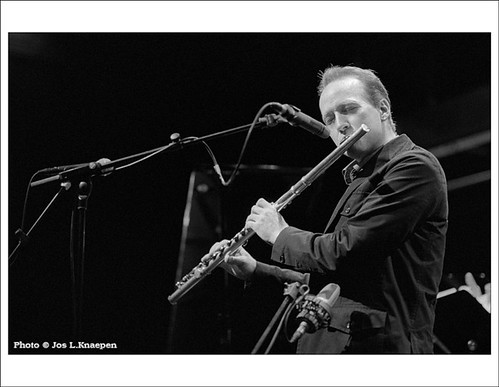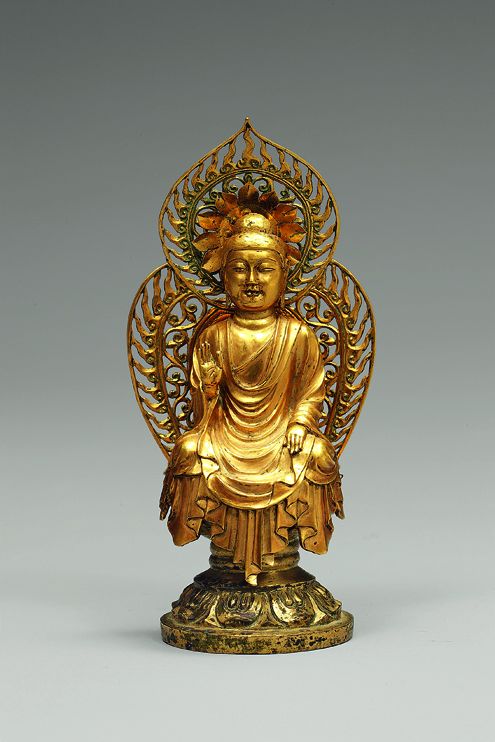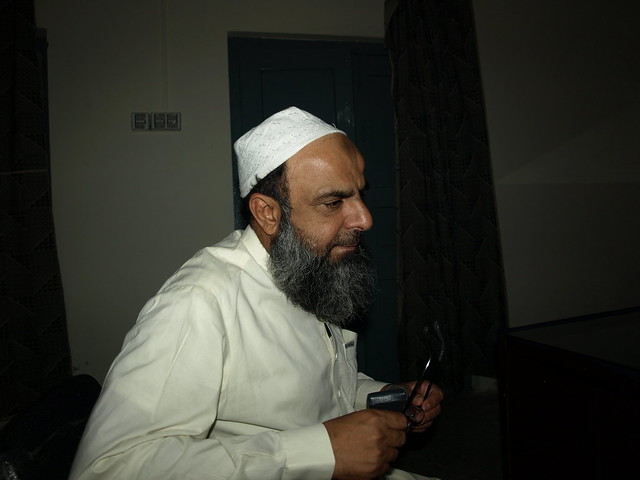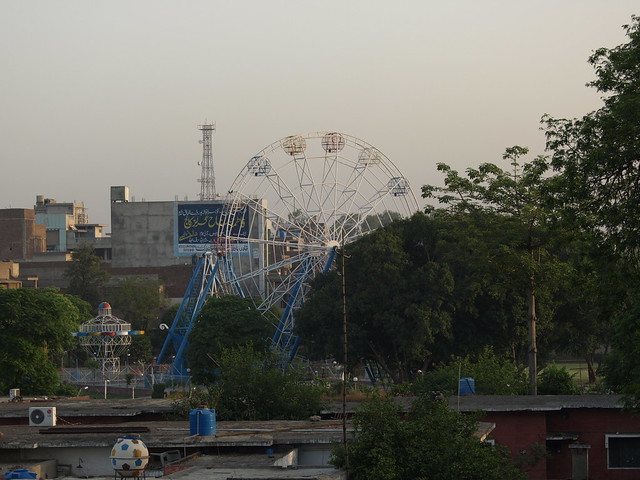AFTER THIRTY THREE YEARS
Khalid
Javaid Jan is much less known in USA than he should be. He is an RMC
graduate and was a student leader of Eagles. He suffered a lot during
student life as he dared to stand up in a totally dictator friendly
institution.
He is a fine soft gentleman at heart, a poet and a thinker. His
most famous poem Haan Main Baaghi Hoon was owned and read by Benazir
Bhutto on her historic coming back for the first time. The title of his
poem was used by Javed Hashmi as a title of his autobiography.
For those who want to have a frank dialogue with the maker, his latest poem Teji Gul. speaks of itself.
https://www.facebook.com/photo.php?v=572191349480058. His ideas and their expression are fearless, which is increasingly
rare in our complacent society of Pakistani intelligentsia.
More of him later, circumstances permitting.
He and his gracious wife were kind enough to host a sumptuous
dinner in their house where Zia Ghani and I met will them and Yasrib
Tanveer Gondal
When I went to Hasanabdal at the
age of twelve in 1973, I have never met anyone with the name Gondal
outside of our family. Even in our family it was not customary to use
this as the part of the official name. Yes it was my 'quom" as mentioned
in the land papers. (There is always a column of qoum in the rural
real-estate papers, when mentioning the name of the owner and the tiller
of agricultural lands). Our ancestors had moved from the Gondal
heartland five generations back across the river into Jhelum District
and our village had only our family of Gondals, rest were Gujjars and
Kashmiris of various sorts.
Mentioning tribal affiliation was
perhaps considered somewhat improper for the newly educated colonial-time raised generation. Many of the politicians have started to use family
names in the post Bhutto back-to-tribalism non-party era.
Back to 1973. Twelve years old are quite
impressionable and look up to their seniors, who are not that old
themselves seventeen years old Second Years. YTG was in my house (Jinnah
Wing) and was in second year. The name Gondal was an immediate
conversation starter. His family was also not from the heartland, having
moved to Chakwal area ( at that time still in District Jhelum). The
association was strengthening . He told me many stories of varying levels of authenticity about us Gondals, .
After one year he was gone and as seniors go out of
that gate onto the GT road to the invisible world of various
professional colleges and military academies, I lost touch with him.
Fast
forward to 1979. I got accepted to Nishtar Medical College and traveled
there from Nowshera where my family lived. My father was in Military
Accounts and we have lived all our lives in various military cantonments
or Air Force camps. I had never lived in Punjab except for five years
in Cadet College Hasanabdal, which is not really Punjab. It is a world of its own, a
walled off island; except some official and non official trips to the
valley in the back and to the Bus Adda. Now I was going to Multan, to
Punjab for the first time to live where most of the people around me
would be speaking in Punjabi in various dialects.
The first day of college was a
really eye opener. Although I had received many letters from various
student political parties in Nishtar welcoming me to college, I did not
realize the cutthroat competition amongst them to woo over the new
students. As soon as our Tanga entered the Nishtar Gate, a thin young
man jumped into the back seat where I was sitting. My Uncle was in the
front seat with the kochowan. This young man, Liaquat M. a famous Jamait
worker had beaten the Liberal's Malik into getting 'hold' of me.
Sportsmanship still worked those days: the Liberals did not pursue me
further and let me go with them. Malik Sahib did introduce himself to me
later and when found out that I was an Abdalian, (he was too) he told
me YTG was there and how to meet with him at the end of the day.
As our class was the seventh class there was no room
and accommodation for us. There were two final years and two first
years. The old final year was taking its final professional, and the old
first year had not cleared its First Year exam. Hostel rooms were
already allotted. We had to find our own place to live. That's were the
student politics played its role. Jamiat would provide housing and will
expect for allegiance in return. Liberals would do the same. Many
seniors made room for a third or a second person in their room
temporarily. Yasrab Tanvir offered his room to me. It was Room 220 in
Razi Hall. I stayed there for more than a month till we got into the
Union Office. (Liberals were in power in the Student Union and Yasrib
Tanveer was the General Secretary).
Nishtar was as tribal as it is today. Most of the
students were from out of town and were 'hostelites'. People were known
either by their geographic and ethnic identities. Sargodhians, Digerians
(of DG Khan) Kashmiris and/or by their subcastes, ie Bajwas (mostly
Jamatias, BTW), Randhawas, Waraichs, Shirkarinis, Sahibzadas, Arains and
of course Gondals. It immediately became a part of my identity and my
defacto name. It earned me higher visibility and automatic recognition.
After our admissions, the classes were suspended, as
the Chehlum of ZA Bhutto was around the corner. The classes would start
after a month. Nowhsera was too far and I decided to stay in Nishtar.
Next day I hear that Yasrab Tanvir is planning to go the Chelum with a
few fellow Liberals. Excited, I agreed to join them.
Thanks to YTG, I entered Ghari Khuda Bux Bhutto
before I entered the classroom in Nishtar. It was an amazing journey. We
went to Sukkher where the family of exiting Liberals Party Chief Wadda
Paa Ijaz Bashir Naaro lived. His mother was an active PPP member and
father was a famous doctor. (Some times later, he along with his mother
and a brother tragically died in a car accident). From Sukkher.we took
the train, Mohenjedaro Express (I am blocking on the name),
There
was a fear that the army may not let the train stop at Naodero Station
(aka Sir Shahnawaz Bhutto Station). We were to pull the alarm bell and
run off the train if that happened. Full of excitement, and fear that
police may prevent us forcibly to reach the village. Fortunately the
train stopped. The five mile or so walk to Ghari KB Bhutto was very
emotional. People from everywhere flocked. mostly chanting slogans in
Sindhi with all the flowery epitaphs for the Military Dictator. It was
like an emotionally charged procession of Aashura, people beating their
chests and with loud lamenting.
I have since visited Bhutto's grave more than once
but that first time, when the grave was still all mud and fresh, will
live with me.
Back to Nishtar, I became one of
the lead persons in the first year for Liberals. My 'credentials' were
quite impressive. That is besides the point that I had really not formed
any clear ideology by that time, my liberal lifestyle notwithstanding.
YTG was very charismatic person. Everybody knew him
and wanted to be close to him. He had connections with all the Left of
the city. We used to go to the University events in support of NSF. We
used to go to factories in support of workers union. I remember once
going to the famous khaad Fertilizer Factory.He was our leader and we
were his lieutenants.
He was a fiery speaker, Two of his famous quotes in
his speeches I do remember. One was the verses of Munir Niazi. kuch onj wi ra'waan aukhiaan sun ---------- and the second was . "Nishtar, which used to be the garh
of Jamiat, we have made it the Qabaristan of Jamiat". Many would doubt the veracity of that, however.
Soon Oct 16 1979 arrived. That night General Zia
announced to once again to postpone the elections and put a freeze on
political activities. That night, there was a fight between Liberals and
Jamiat. Much bloodshed although no one lost his life. Principal, the
late Hayat Zafar, in consultation with SMLA Multan or under their
advice, decided to forcibly migrate the leaders of both parties to
various other medical colleges. YTG was migrated to RMC.
Rawalpindi Medical College was on a different
political planet than where Nishtar existed. Here Jamiat was in full
control, the Eagles were a peace loving marginalized minority. General
Zia's two children were students and some members of Jamiat were
considered very close to the Army House. YTG was the wrong person to
enter into this tranquility. He shook up the status quo and soon Eagles,
including the ever mellow Javaid Jan Sahib, were all energized to
challenge Jamiat in their home turf.
There was another fight. It was May the 10th, 1980.
The People have different versions of what happened, but at the end of
the day, YTG was rumored to be targeted and he escaped.
The version known to me was as follows: a few weeks back their was a big Barsi for Z A Bhutto basically organized by YTG.
It was in the medical college and had roughed some feathers. Powers to be were not happy with that. Many
jiala students from outside the town and province had come to attend
that. The score had to be settled sooner or later. A few weeks later
some of the jialas took out the Inaugural stone which had the name of General
Zia. That let to a series of skirmishes and fights. Many Eagle students
were injured and were taken to area hospitals. Khalid Javaid Jan had more than one fractures.
It
is believed that the 'orders' were issued to eliminate YTG. He escaped
in a runaway car at the back of Holy Family Hospital. He eventually
left RMC and Pakistan for Europe. Eagles in RMC ware bruised beyond
repair and the ground was re-acclaimed by Jamiat for years to come.
In Europe he stayed mostly in Holland. He became
involved in the international left movements.He was a Trotskyite and
became involved in Fourth International. The word struggle was always
liked by him. His student days journal was also called The Struggle. It
still does.
A couple of years later, I found myself in somewhat similar
situation, ie leaving Nishtar due to politically instigated fights and
eventually landed in Rawalpindi Medical College. YTG was gone but his
notoriety haunted the place. Every body knew about him and many derived
'logical' conclusions. Another Gondal, from Liberals in Nishtar lands in
RMC. That may have made some people cautious.
But as there were
some similarities, there were many differences. I was a different
person with a different background. He was a passionate revolutionary,
(many doubted the depth of his conviction at that time) while I was
still finding my way. He could go to all lengths, whereas I had my
limitations. Not to take away any thing from him, he did have the
backing of a strong family with power and friends in high places.
Colonel Sahib, his late father, had a large house on the Sixth Road in
Satellite Town and large land ownership in Chakwal. I was the son of a
retired Military Accounts official. He could go on and keep conquering
the world; I knew I had my last chance. I should not try to fly any
more. If I take one more misstep, I am done. They could stick a fork in
me. There was not much politics left in RMC after May the 10th anyway. I
kept my feet on the ground and my eyes on my feet.
After
a long self exile, during Benazir's Prime Minister-ship he came back. By
that time I had already graduated form RMC and left for USA. YTG has
remained mostly outside of the PPP power struggle and has over a period
of time developed his own place as an ideolouge and a thinker.
It was a pleasure meeting with him after a long time. I had been
hearing about him from mutual friends although had not followed him on
TV and on his articles.
During student life, many would think
of him as a shallow politician, an instigator of conflict and not a
person with deep political convictions. With time he has proven all his
critics wrong. Many who would have written him off as an interloper have
gone on to become a part of the same establishment they claimed to
abhor. On the contrary, he is still fused with his student age
enthusiasm and revolutionary romanticism.
His Abdalian friends would joke that he would not be
able to finish a book with some mindful reading, and here he has
authored more than a dozen of books and booklets. He is well read, is a
prolific writer, a columnist and still a community organizer.
After the initial catching up for the lost years, the discussion at
the dinner may have not been much different than what happens in these
meeting. What was different was that while the material world has been
increasingly kind to Jan Sahib, and Yasrab Tanveer was always endowed,
both of these student leaders of the Left are still much the same as
they were thirty years back. Both are op-ed columnist and writers, (Jan
Sahib is a great poet), have left the field of medicine way behind in
the rear view mirror, and are still working to make this world a better
world.
Yasrab Tanveer has left his original name behind and is not interested in his old
name and details of his past. He has longed moved away from tribalism to
idealism. The one who influenced me to know more who I was has decided
to forget who he was and got wedded to his passion. He is now totally
Red. He is now, only and only, the Lal Khan.














